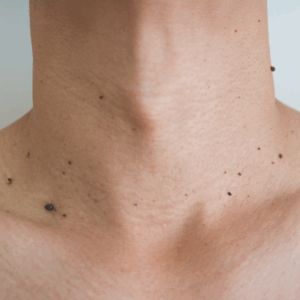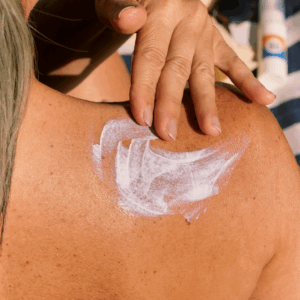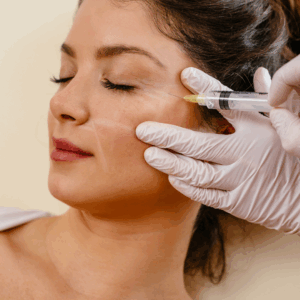
Back-to-School Routine Skin Care Check
Give your skin a much-needed reset this back-to-school season. Book your full-body skin check with Bryn Mawr Dermatology today.
Spring may feel like a welcome relief after the colder months, but it can also mean a surge in pigmentation problems for your skin. As UV levels climb, conditions like melasma and sunspots become more visible or might be triggered by increased outdoor activities.
Even brief sun exposure can activate excess melanin production, especially in those prone to pigmentation. In this article, we’ll explain how harsh sunlight impacts your skin, what makes melasma and sunspots different, and how to effectively prevent and treat uneven pigmentation.
While this article spells out some important information about spring sun, we highly recommend you read the full article, here are the key points we will focus on:

UV radiation is a well-established contributor to hyperpigmentation. Studies show that even low-dose UV exposure can worsen melasma and lead to persistent dark spots over time. Following are some ways sunlight can affect your skin:
These seasonal shifts can impact your skin’s clarity and tone without proactive sun protection.
Hyperpigmentation conditions like melasma and sunspots don’t appear overnight; they’re often the result of repeated sun exposure over time.
Here’s how UV rays play a role in pigmentation changes:
While melasma and sunspots appear as dark patches on the skin, they are distinct conditions with different causes and treatment approaches. Melasma is often linked to hormonal changes and appears as larger, symmetrical patches of discoloration on the cheeks, forehead, nose, or upper lip. It’s more common in individuals with medium to darker skin tones and can be sensitive to heat and light, making treatment more challenging.
Sunspots, or solar lentigines, develop gradually due to long-term sun exposure. They are usually smaller and well-defined and appear on areas with the most UV exposure, like the face, hands, and shoulders. They’re more common in fair-skinned individuals and often respond well to topical and light-based therapies.
Though similar in appearance, melasma and sunspots require different strategies for treatment and prevention, so an accurate diagnosis from a dermatologist is essential.
Sunscreen must be reapplied regularly, especially in spring when UV exposure rises, to prevent pigmentation such as melasma and sunspots.
Reapplication is key not only for sunburn prevention but also to protect against stubborn discoloration and premature aging.
While sun protection is essential for preventing new pigmentation, existing discoloration often needs targeted treatment to fade effectively. Depending on the severity of the condition, at-home skincare, prescription-strength options, and professional procedures can all play a role.
Consistent sun protection is critical during and after any pigmentation treatment to prevent recurrence or worsening of discoloration.
At Bryn Mawr Dermatology, we understand how seasonal changes can complicate skin conditions and are here to help you protect and restore your skin’s natural clarity.
Our board-certified dermatologists provide personalized care using advanced diagnostic tools and effective treatments tailored to your unique skin type and pigmentation concerns. Whether you need help selecting the right sunscreen, treating sun damage, or building a spring-specific skin care plan, our expert team is committed to helping you maintain healthy, even-toned skin.
With locations in Villanova, Collegeville, and Wayne, scheduling an appointment has never been easier. Book online or call us at (267) 486-3482 to take the first step toward clearer, more radiant skin this season. We look forward to caring for you!

Give your skin a much-needed reset this back-to-school season. Book your full-body skin check with Bryn Mawr Dermatology today.

Ready for a skin reset? Refresh your glow after summer with expert care and treatments at Bryn Mawr Dermatology. Book your appointment today.

Is that bump a wart or a skin tag? Learn how to spot the difference, and when it’s time for treatment your next treatment.

Worried about summer sun damage? Learn UV safety tips to protect your skin all season long. Schedule your consultation today!

Think skin exams are only for those with visible concerns? Annual skin checks can detect early signs of cancer.

Think skin exams are only for those with visible concerns? Annual skin checks can detect early signs of cancer.

By: Bryn Mawr Dermatology, Published: March 4 2024
Medically Reviewed By: Christine Stanko, MD, FAAD –March 3, 2025
For COSMETIC APPOINTMENTS:
For MEDICAL APPOINTMENTS: